Exploration of Ancient Crystal, Amethyst, and Garnet
Beads
This segment invites you on a visual journey showcasing
a diverse collection of translucent semi-precious stone
beads, fashioned from rock crystal, amethyst, and
garnet. Each of these gemstones holds a unique story of
antiquity and cultural significance, eloquently
expressed through their radiant beauty.
Rock Crystal
Considered one of the most common semi-precious stones,
rock
crystal stands as a stunning example of nature's
artistry. With a Mohs hardness rating of 7 in its purest
form, rock crystal provides both aesthetic appeal and
durability. Its natural transparency makes it a coveted
material for bead making, with its usage tracing back to
ancient civilizations.
In the context of ancient India, particularly during the
Mauryan period, rock crystal was highly esteemed and
extensively used in creating a wide array of items,
including beads. Despite the scarcity of pure,
transparent rock crystal, the culture saw its potential
and made the most out of its availability. Intriguingly,
numerous rock crystal beads have been found in the
burial caskets of ancient Buddhist Indian stupas,
hinting at their significant role in cultural and
religious rituals.
Not only was the use of rock crystal prevalent within
India, but the quality of Indian crystal was also
recognized beyond its borders. This led to its export to
the Roman Empire, further extending its cultural
influence and making it a part of a global exchange in
the ancient world. Such trade networks facilitated not
just the movement of goods, but also the exchange of
ideas, aesthetics, and philosophies between different
civilizations. |
The beads in
my collection
are now for sale
Inquire
through bead ID
for price
|
|
|
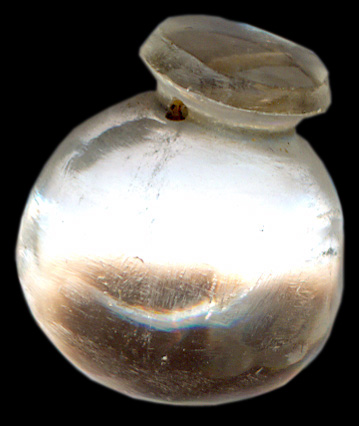
CR
1 -
16 * 14 mm
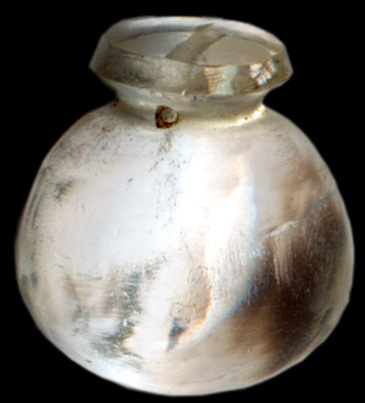


|
The Power of Translucency: Visible Drilling Holes
A distinctive feature that sets rock crystal beads apart
from other types of beads is their remarkable
translucency. This property allows for the illumination
of otherwise hidden aspects of the bead-making process,
namely the drilling holes.
In many gemstones, the drilling holes where the string
passes through are invisible or obscured. However, with
rock crystal, the light permeates through the bead,
making these drilled holes clearly visible. This
visibility offers a fascinating glimpse into the
intricate craftsmanship that went into their creation.
As you navigate through this collection, take a moment
to admire the luminosity of these ancient rock crystal
beads. Let the visible drilling holes serve as a subtle
reminder of the skilled artisans who meticulously
crafted each piece.
|
|
|
|
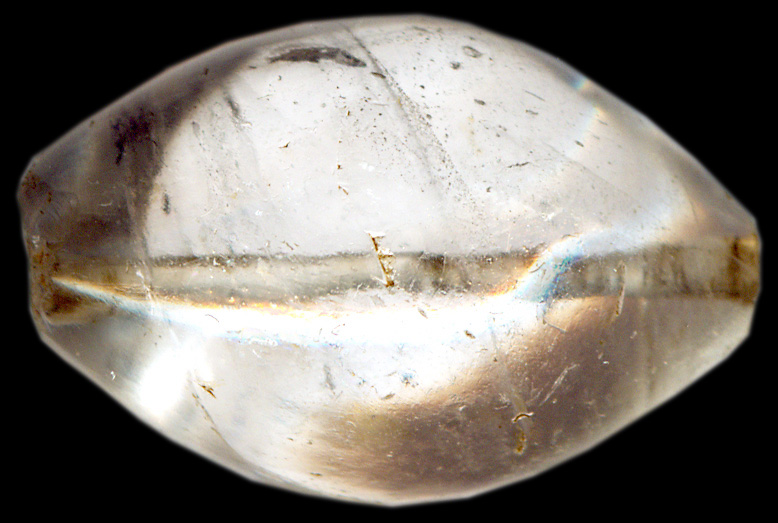
CR 2 -
34 * 20 mm
Large ancient crystal bead

|
|
|
|
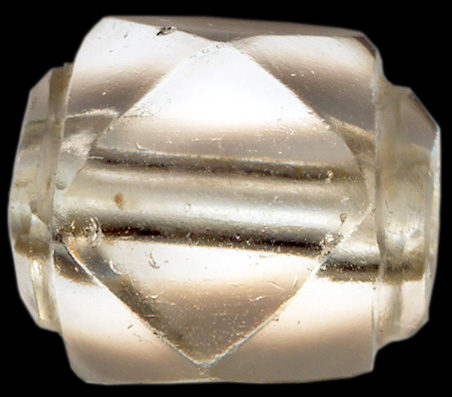
CR 3 -
18 * 15
* 14 mm


|
|
|
|
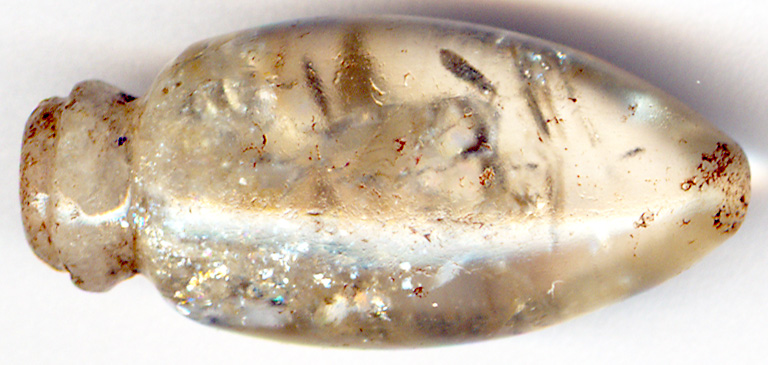
CR 4 - 31 * 14 mm
This ancient crystal pendant bead is extremely rare
Click on the above pictures for a larger image

|
|
|
|
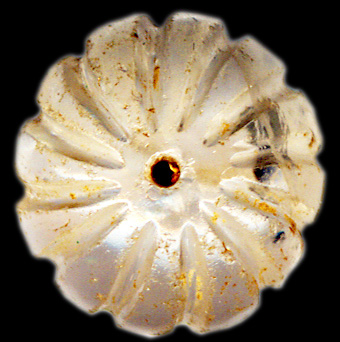
CR 5 -
12 * 11 mm
Melon shaped Mauryan
crystal bead talisman
|
|
|
|
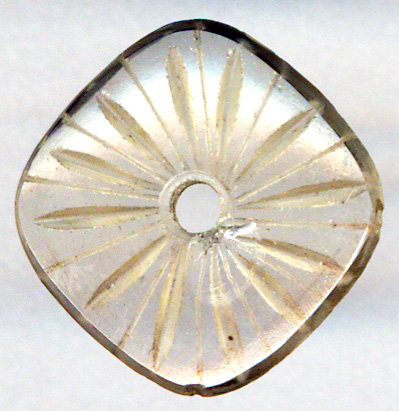
CR 6 -
14 * 2,5 mm

|
|
|
|
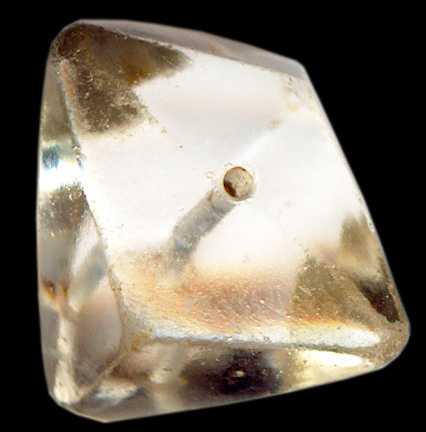
CR 7 - 14 mm
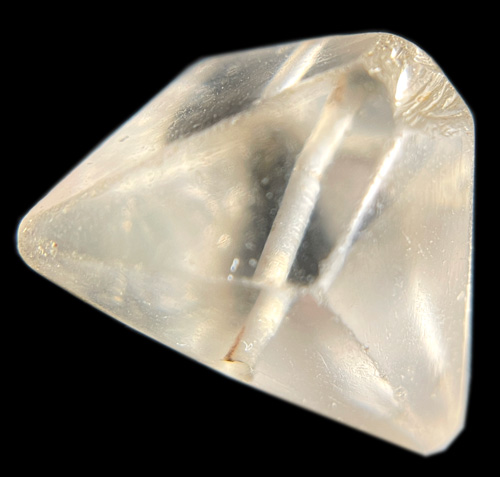
|
|
|
|

CR 8 -
largest 13 mm - Lot of 9

|
|
|
|
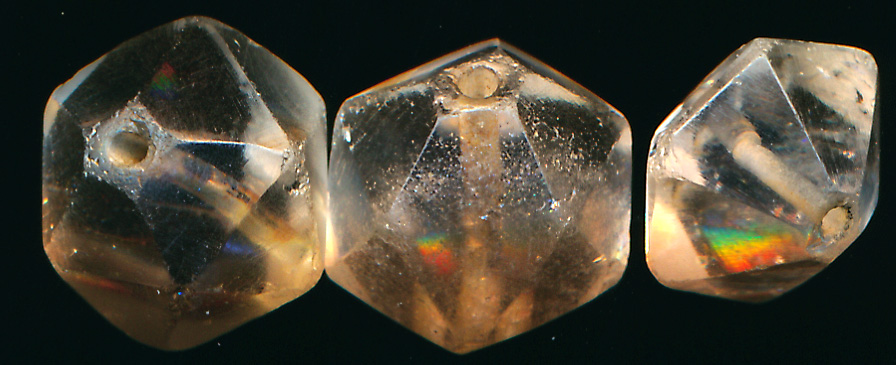
CR 9
- Lot of 3 pieces - Left bead 13 * 14 mm

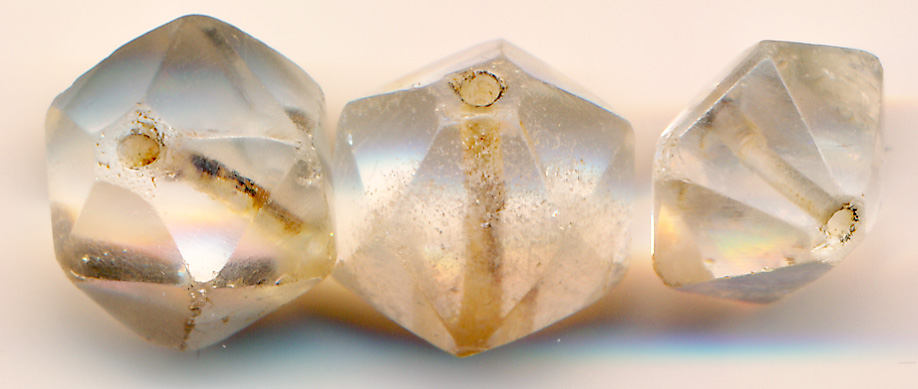
|
|
|
|
|
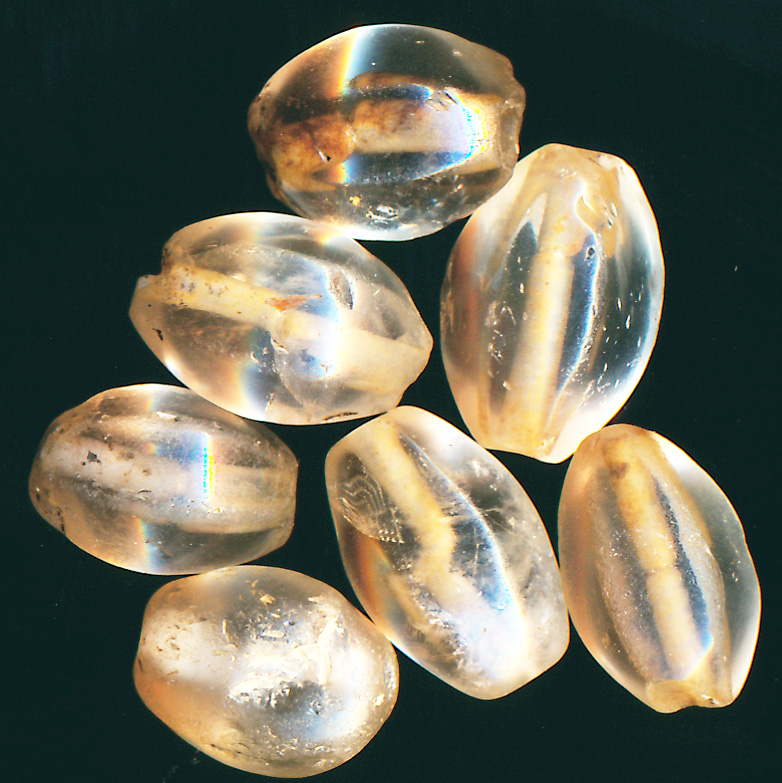
CR 10 - 12
* 8 mm - Lot of 7
Note: These beads are more whitish seen
in normal light.
However, the color displayed here is also a part of their
radiance.
The difference will be the same as you can observe various photo
sessions of CR 9
|
|
|
|

CR 11 - 25 * 19 mm
A true
Broken Beauty

|
|
|
|
|
|
|
|
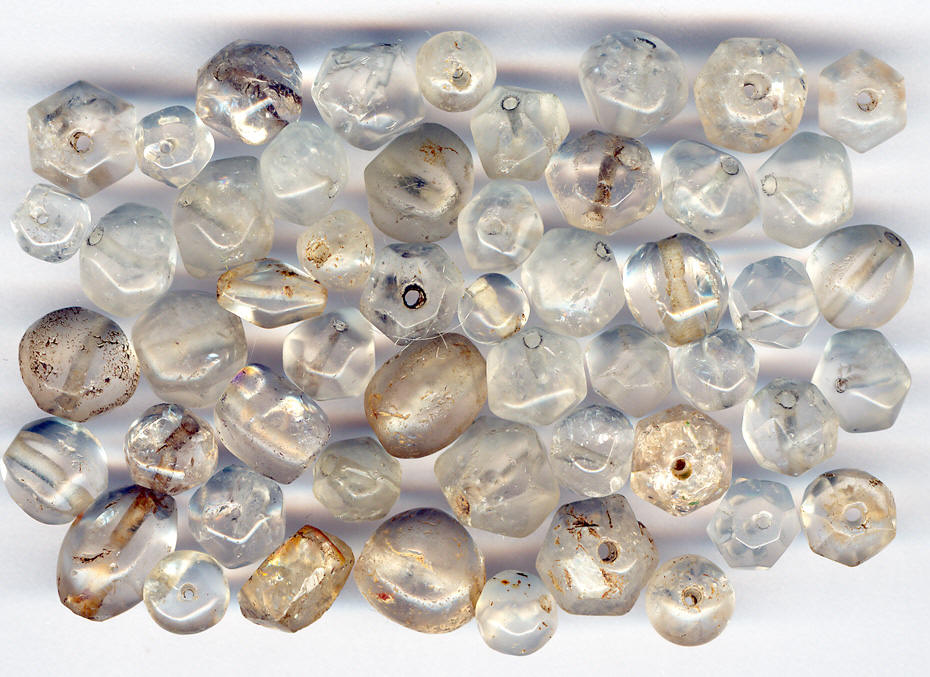
CR 12 - 8
to 10 mm - Lot SOLD
|
|
|
|
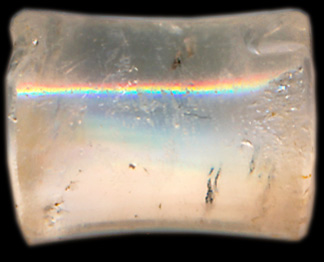
CR 13 - 13 * 10 mm
This is not a bead.
It is an ancient
earring.
|
Exquisite
Carved Amethyst Beads: Artifacts from the Rajput Era
The following selection showcases an array of
beautifully carved amethyst beads, originating from
Rajasthan during the Rajput period, around 1200 AD.
Amethyst, a variety of quartz known for its distinctive
purple hue, has been cherished throughout history for
its captivating beauty. The stone was greatly valued
during the Classical Period in India, with its usage in
bead making becoming increasingly widespread.
These amethyst beads carry the artistic imprint of the
Rajput era, renowned for its sophisticated culture and
extensive patronage of the arts. Each bead features
intricate carvings, showcasing the meticulous
craftsmanship of the Rajput artisans.
|
|
|
|
CR 14 - Lot - 7 pieces
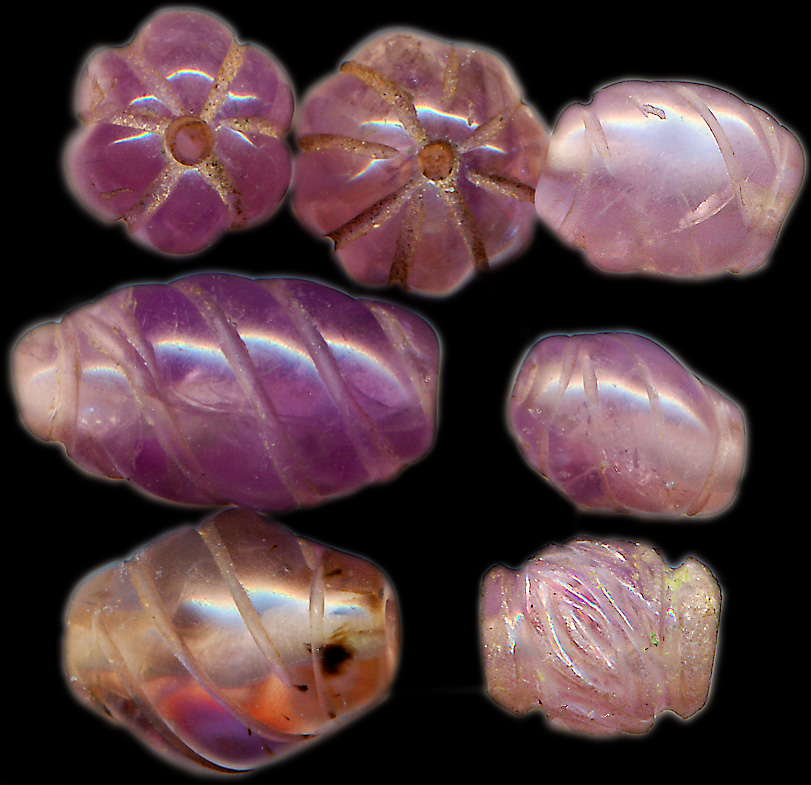
Middle left : 20 * 9 mm - Left down :
15 * 10 mm
|
|
|
|
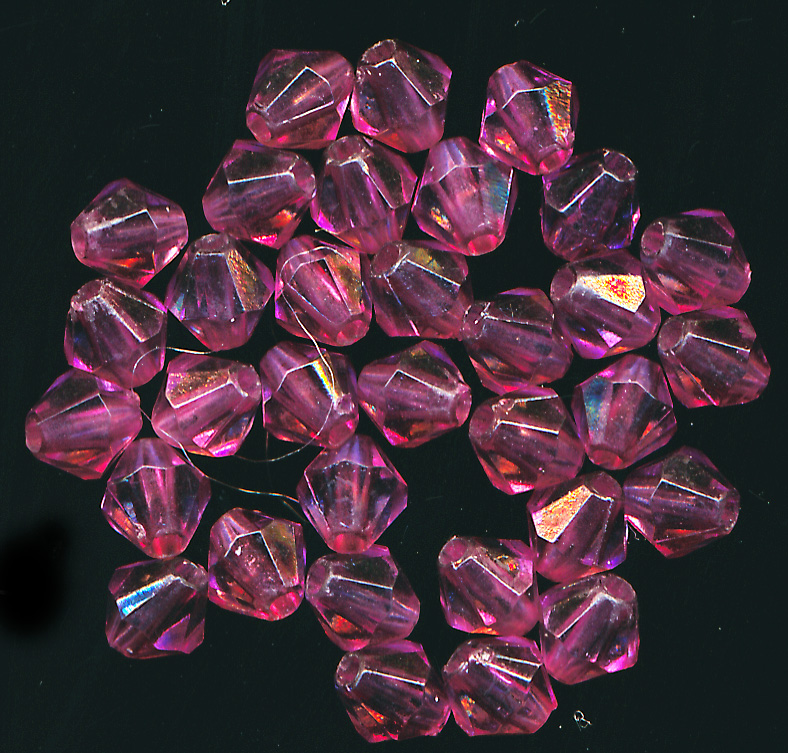
CR 15 - 5 mm - Lot
|
These wonderful tiny amethyst beads are from Sri
Lanka. They are not ancient, but more than 150 years old. In the
late 18th century, they stopped making these beads since there
was going too much over-costly work into the polishing process.
Note the high quality of the stone itself.
|
|
|
|
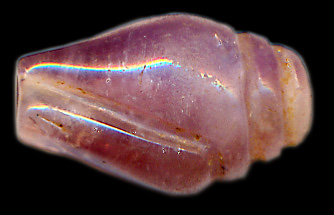
CR 16 - 13 * 8 mm
Carved conch shell bead
|
|
|
|

CR 17 - 33 * 20 * 17 mm
Another
Broken Beauty

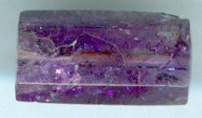
CR 18 - 15 * 7 mm
|
Citrin/yellow quartz Beads
|
|
|
|
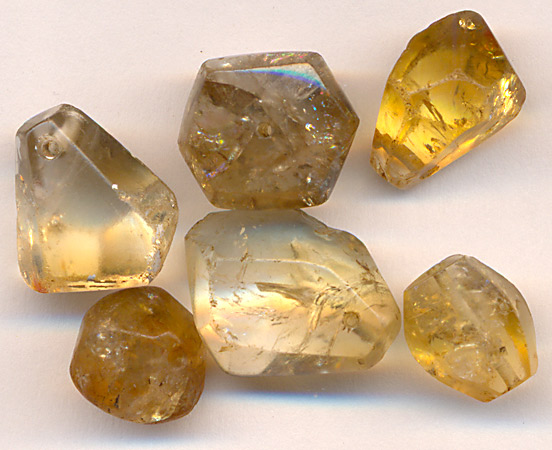
CR 19 - Largest piece: 16 * 13 * 10 mm - Smallest piece:
10 * 8 mm -Lot
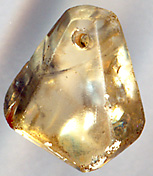
|
Ancient garnet Beads
Apart from rock crystal, garnet is the the most common semi precious stone. In contrast to rock crystal garnet is only found in small pieces. This is reflected in the size of the garnet beads displayed above. Crystal beads are often much larger in size.
Garnet beads are not reported from the Indus Valley
sites. They first become fashion in the Buddhist period
of Indian hitory.
|
|
|
|
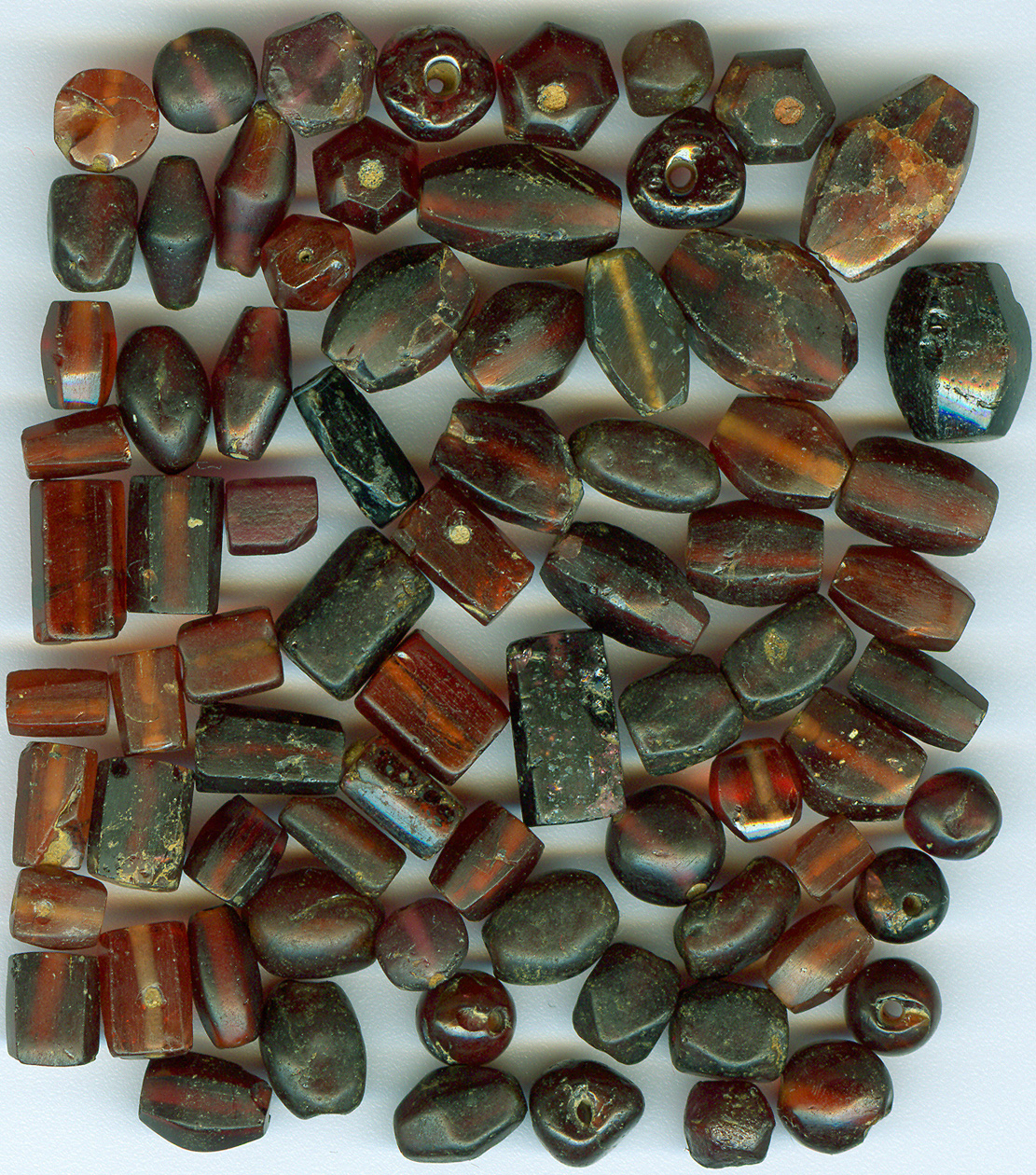
CR 20
- Lot
Largest piece: 10 * 5 * 4 mm - smallest piece:
4,5 * 3,5
mm
Click on picture for larger image
Small ancient
Garnet Beads.
|
|
|
|
|
|
|
|
|